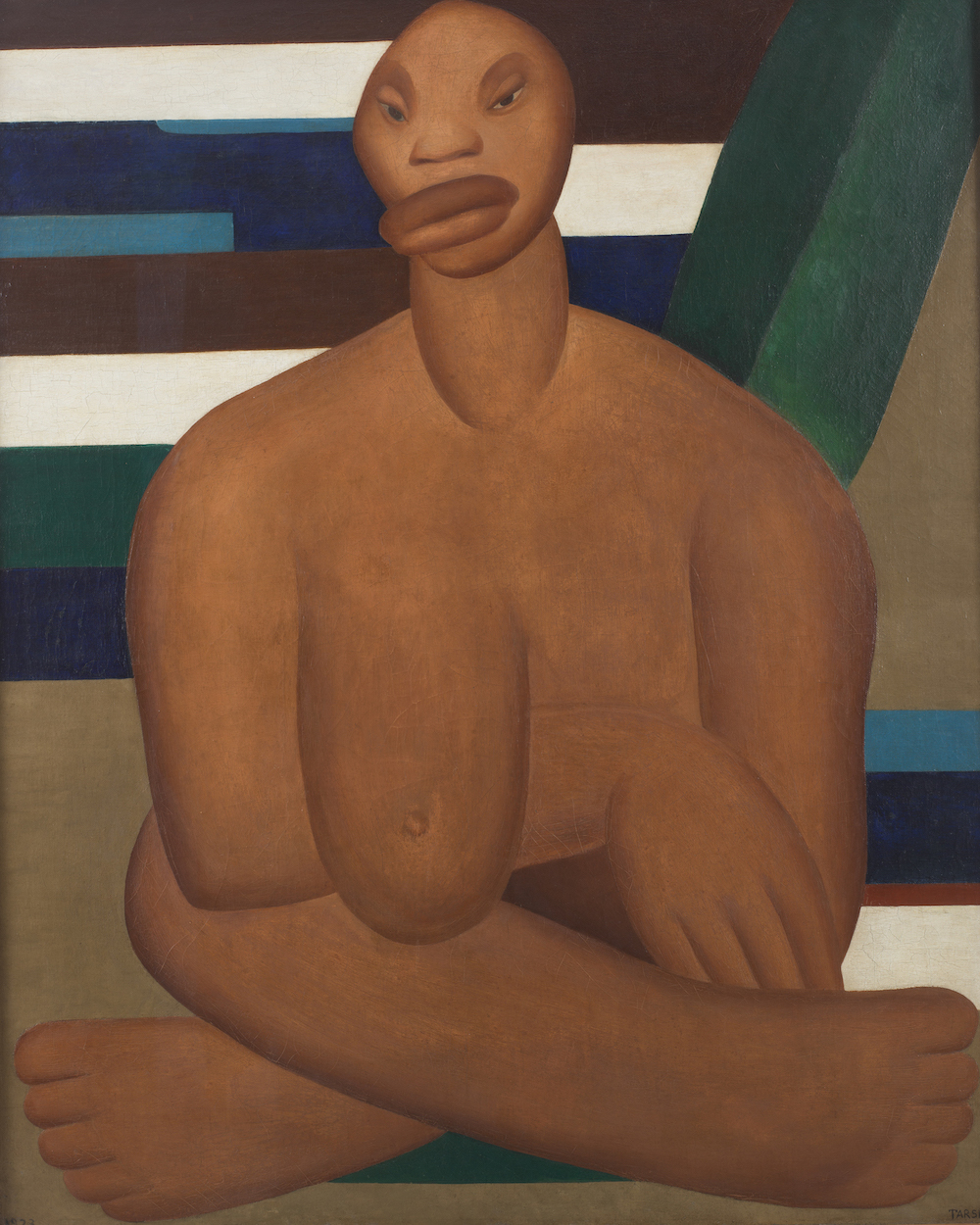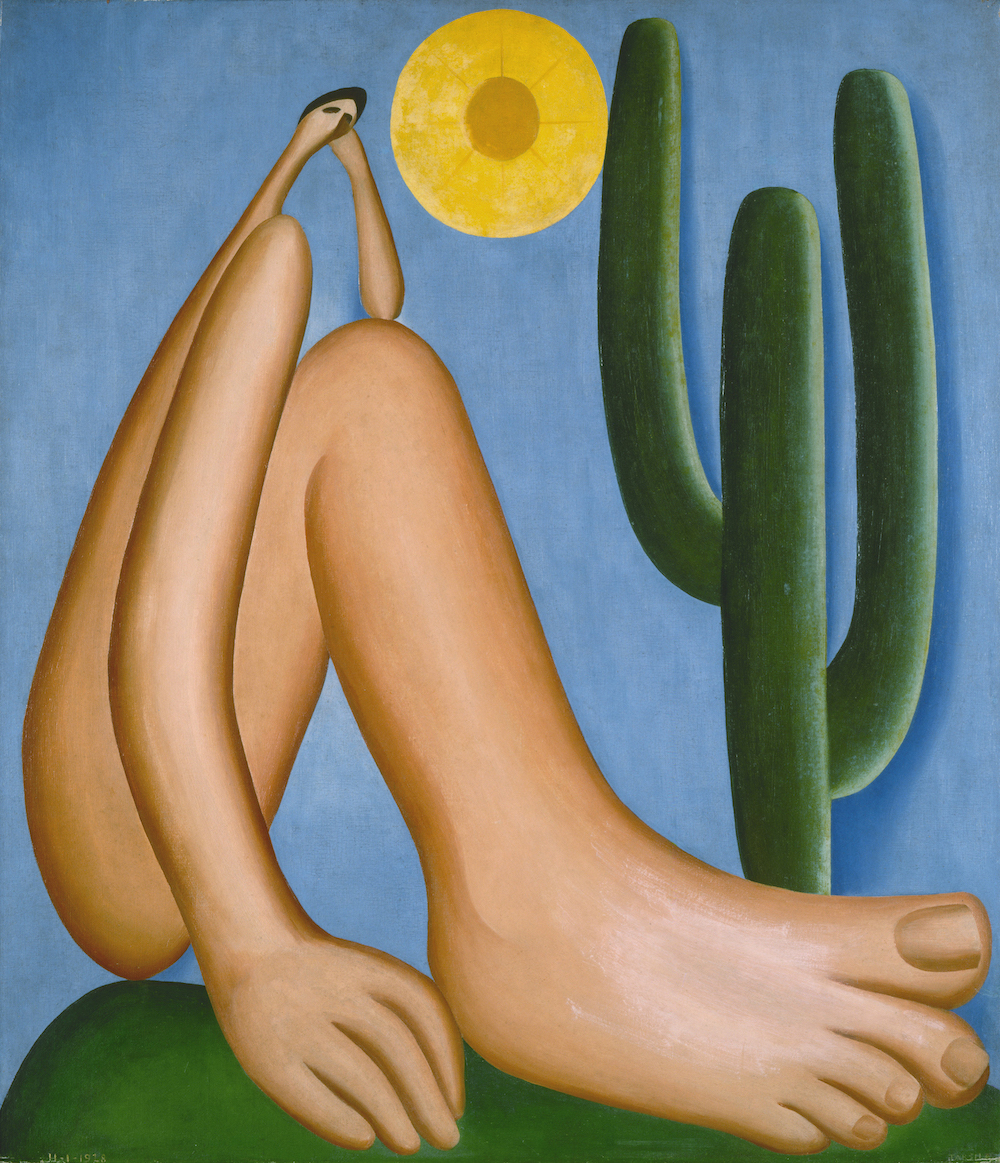
At the Museu de Arte de São Paulo (MASP), Tarsila Popular is the largest exhibition ever dedicated to one of the great Brazilian artists of the 20th century. In Tarsila’s hometown, and in one of the most significant museums in Latin America, the exhibition brings together 92 works that contextualize race, class, and post-colonialism in Brazilian Modernist painting.
Tarsila do Amaral was born to a wealthy family of landowners on a coffee plantation in the state of São Paulo in 1886, two years before Brazil abolished slavery. She began painting in São Paulo in 1916, and in 1920 left for the Académie Julian in Paris where she studied with the Cubists André Lhote, Albert Gleizes, and Fernand Léger. Tarsila spent much of the next two decades traveling in Europe and Brazil, showing work in Paris and São Paulo, reinventing European forms with Brazilian subjects.

In 1923, at the end of her stay in Paris, Tarsila painted A Negra. It was the first of many paintings in which she adapted Cubist aesthetic with distinctly Brazilian subject matter. The figure was inspired by a slave from Tarsila’s family’s plantation, with some specificity of her body and ethnicity, as opposed to a typical female bather in the European tradition.
When she returned home in 1923, Tarsila wrote, “I’m deeply Brazilian and I’m going to study the taste and art of our caipiras (people from the countryside). I hope to study, in the countryside, with those who have not yet been corrupted by the academies.”

Tarsila and the writer Oswald de Andrade traveled throughout Brazil to explore indigenous cultures and to find inspiration for their work. The two married in 1926, and in 1928 Tarsila’s painting Abaporu became the visual reference for Andrade’s Manifesto Antropófago (Cannibal Manifesto). The assertion, antropofagia, was for a new Brazilian nationalism with Modernism as its unique aesthetic identity. It proposed a form of cultural cannibalism in which Brazilians consumed indigenous, European, and Afro-Brazilian identities to transform into their own modern culture, distinct from any of the others.

If antropofagia was a manifesto of cultural appropriation, Tarsila’s work took a new direction during the next decade. She split from Andrade, and her family lost its fortune in 1929. Brazil fell under military dictatorship in 1930, and Tarsila became involved in the São Paulo Constitutional Revolt in 1932. She was imprisoned for a month because of this and suspicion about her travels to the Soviet Union. Her later work incorporated social themes in addition to the people and landscapes of Brazil, informed by a lifetime that spanned eras of slavery, revolution, dictatorship, and transformative modernism.

MASP’s focus in the current exhibition is the “popular,” highlighting many ways in which Tarsila contributed to modern art and national identity, and the construction of brasilidade, or “Brazilianness.” The exhibition is part of a series on the notion of the popular in Brazil, which began in 2016 and concludes with a year of exhibitions dedicated to women artists in 2019.
Tarsila Popular is on view through July 28, 2019.